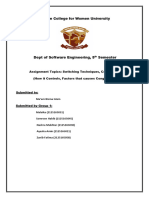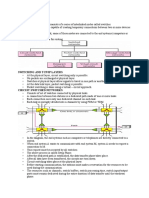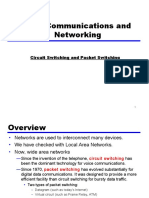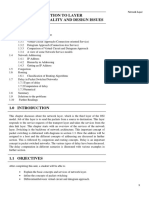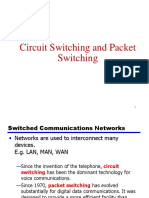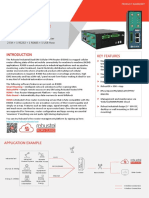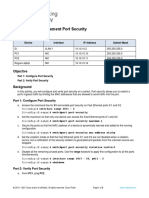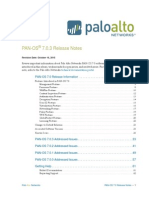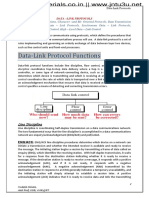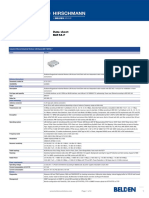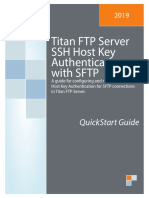0% found this document useful (0 votes)
3 views3 pagesChapter 5 DCCN
The document discusses switching and routing in networks, detailing circuit-switched and packet-switched networks, including their characteristics and types. It explains the processes involved in routing, the significance of routing tables, and introduces the X.25 protocol for packet-switched communications. Additionally, it covers congestion issues in networks and outlines congestion control techniques and traffic management strategies to optimize data flow and maintain network performance.
Uploaded by
Digbijaya SwainCopyright
© © All Rights Reserved
We take content rights seriously. If you suspect this is your content, claim it here.
Available Formats
Download as DOCX, PDF, TXT or read online on Scribd
0% found this document useful (0 votes)
3 views3 pagesChapter 5 DCCN
The document discusses switching and routing in networks, detailing circuit-switched and packet-switched networks, including their characteristics and types. It explains the processes involved in routing, the significance of routing tables, and introduces the X.25 protocol for packet-switched communications. Additionally, it covers congestion issues in networks and outlines congestion control techniques and traffic management strategies to optimize data flow and maintain network performance.
Uploaded by
Digbijaya SwainCopyright
© © All Rights Reserved
We take content rights seriously. If you suspect this is your content, claim it here.
Available Formats
Download as DOCX, PDF, TXT or read online on Scribd
/ 3


















